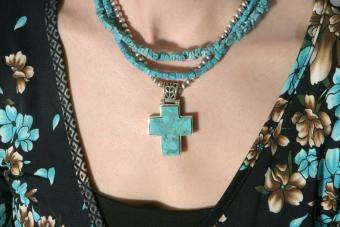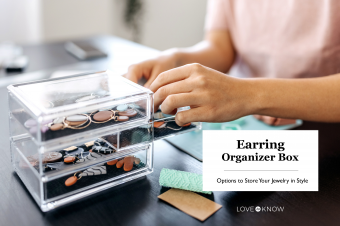
Whether used to secure the hair of a lost loved one or to keep the portrait of your far-off lover close, people have been incorporating lockets into their everyday dress for hundreds of years, and the Victorian locket embodies this quintessential object. Accompanied by metal or velvet chokers, proper Victorian women wore these large lockets around their necks in droves. Thankfully for those who enjoy historic jewelry, Victorian lockets are still considered quite fashionable, but before you grab the first antique locket you can find, take a deep dive into these delicate accessories and see why the practice of wearing one has stood the test of time.
Types of Victorian Lockets
Victorian lockets were often crafted out of silver, and were occasionally decorated with gold, enamel, and jeweled accents. While there are a few different varieties of Victorian lockets, they all seem to share a few similar characteristics. These adornments were rather large and usually came equipped with a matching collar of either silver, cord, velvet, and other easily accessible materials. Despite these similarities, Victorian lockets can be divided into just a few major categories:
- Monogrammed lockets - These lockets boast inscriptions of the owner's full initials across their faces and were often gifted by family members or loved ones.
- Aesthetic lockets - These lockets developed out of the Aesthetic movement which thrived in Britain during the mid to late-19th century that was focused on creating art that was beautiful solely for this 'aesthetic' beauty - think art for art's sake.
- Memento lockets - Popularized by Queen Victoria following the death of her beloved husband, memento lockets were used by Victorian people as tokens of wearable memories, with wearers nestling pictures, hair clippings, and personalized notes of their loved one's inside.

Design Elements of Victorian Lockets
As was usual for nearly all the decorated things during the Victorian period, silver lockets of the time were expertly crafted and delicately designed. Some of these design elements that artisans exhibited within their lockets include:
- Repousse or embossing - This describes a technique in which the surface of a piece of metal is raised by hammering from the reverse side.
- Chasing - This describes a technique which is worked on from the front where patterns are punched into the surface to create a lasting decoration.
- Engraving - This describes a technique which was utilized to create fine lines and typography on lockets, being particularly important in the making of monogrammed pieces.
- Portraying romantic motifs - Many Victorian lockets can be found with Romantic motifs like flowers and landscapes etched into their faces.

Typical Marks Found on Victorian Lockets
While not every silver Victorian locket was stamped with an identifying mark of some kind, a good number of them were. Particularly those that were manufactured domestically in the United Kingdom have some degree of markings in order to abide by government mandates. For example, you might find listings for silver lockets which are labeled "Birmingham" or "Sheffield," though you probably don't know what that means. These are indicators that a silver locket bears the official marks from one of the four historic Assay Offices - the government centers which approved the quality of the precious/semi-precious materials in question. If you have a locket in your care, take a minute to look for these marks and other such indicators as well to see if you can piece together the unique manufacturing history of your family heirloom.
Victorian Silver Locket Values
Although the design features for these antique accessories encompasses a wide swath, the material does grant all of the items an average value of $300-$500. Of course, some lockets far surpass these estimates, such as Queen Victoria's mourning lockets, which were recently estimated to be worth between $2,000-$4,000 each, but the majority fall comfortably within these ranges. For example, a late Victorian silver locket with Romantic motifs sold for almost $500, while a dissimilar 1875 silver mourning locket is listed for a little over $400. Even simple Aesthetic lockets are worth a sizable among, like this 1880s Aesthetic silver locket that's listed for about $250.

How to Care for Antique Silver Jewelry
One of the most important steps that all fine jewelry owners need to establish is a cleaning routine; making sure to clean and polish your silver jewelry will keep it lustrous for decades to come. Specifically, silver naturally develops a dark patina over time, so you'll want to be careful to use silver safe polishes when sprucing up your pieces. Additionally, make sure to be careful around the locket's hinges as these can be rather fragile and require special care. Overall, these delightful tokens from the past can withstand everyday wear, though being made out of thinner layers of silver means that they can be prone to getting dents and dings if worn in active situations.
Memories Fade, but Lockets Never Do
One of the most heartwarming aspects of owning a Victorian locket is being able to follow the tradition of whatever memorable occasion or person the jewelry was meant to symbolize alive long after they're gone by putting your own modern spin on it by adding a new miniature portrait, note, or some such token of a loved one in your life to this historic locket. Simply, Victorian lockets, lets you hold the past and the present simultaneously in your hands.







